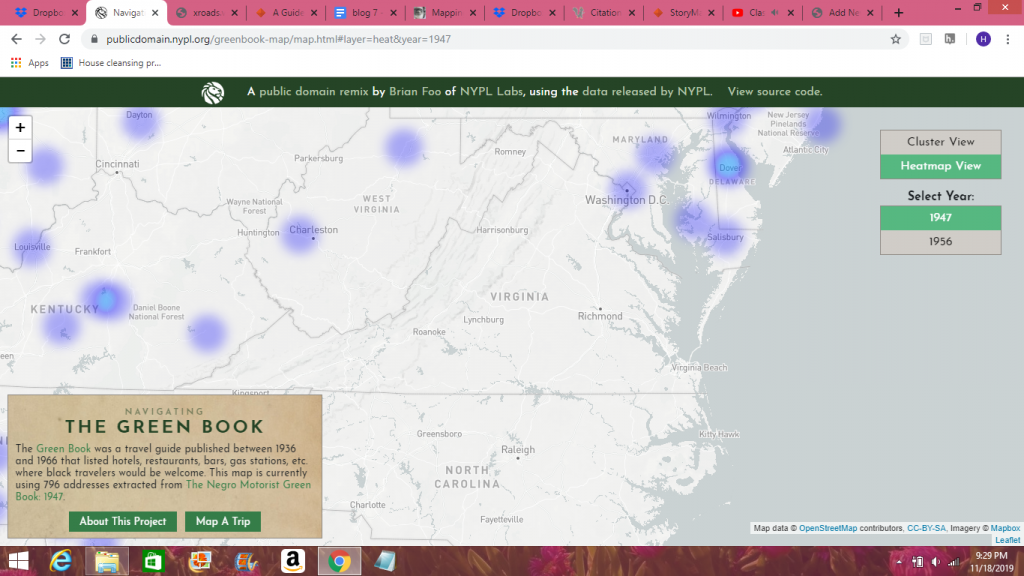The tour that I chose for this assignment stretched from Hoover’s Airport in Washington DC down to a small town in Virginia called Ashland. I chose this tour because it set in an area that I am familiar with. I grew up in northern Virginia, and I was curious to learn more about the routes suggested by both the American Guide Series and The Green Book. In our reading from Shaffer, she wrote that the American Guide Series had attempted to capture the “real spirit” of the various regions throughout the US 1. Even though I am a native to the area depicted in the tour, I don’t know all the historical and cultural details of the locations. Not to mention, this tour was written in the 1930s, and the guide likely included details that I did not know about.
The tour was interesting enough. I learned a little bit more about the history of several towns that I was familiar with. However, what really caught my attention was the Green Book project. I took the same tour that I had mapped out, and I entered the start and ending points, from DC to Ashland, Virginia. The Green Book route completely stopped in DC, and did not enter Virginia at all. I viewed the US map that listed all the safe locations in the country, and there were none at all in Virginia.
This Green Book project reminded me of the article “Mapping Racism and Assessing the Success of the Digital Humanities”. In that article, it illustrated the number of lynchings on the US map by county 2. It’s one thing to hear about the number of lynchings in the US, but it is another to see it visually represented on a map. Similarly with the Green Book project, it was quite startling to see that Virginia, my home state, did not have even one establishment friendly to African Americans in the entire state.
It is saddening as well. A white American would have had little difficulty finding businesses that would accept them on the tour. But an African American would have been unable to find a business friendly to them in the entire state. A simple vacation in Virginia, a tour to see the sights, would be next to impossible for an African American, and there are likely more states that were void of any Green Book locations. Tourism had been encouraged in the Great Depression in order to foster a sense of pride and common culture in the US, but it’s clear that this was only available to a select few.


- Shaffer, Marguerite S. See America First: Tourism and National Identity, 1880-1940. Smithsonian Institution, 2002.
- Bond, Sarah E. “Mapping Racism And Assessing the Success of the Digital Humanities.” History From Below, 20 Oct. 2017, https://sarahemilybond.com/2017/10/20/mapping-racism-and-assessing-the-success-of-the-digital-humanities/.
